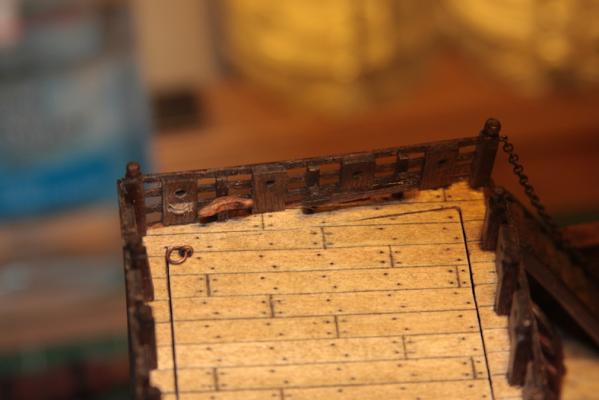-
Posts
1,028 -
Joined
-
Last visited
Content Type
Profiles
Forums
Gallery
Events
Posts posted by Moonbug
-
-
Good work on a very difficult part of the build.
- Bug
-
-
Thanks BE, appreciate you stopping by, and the kind words.
- Bug
-
-
Really nice work. I'm still debating whether to copper the next build or leave the wood. Your work makes a great argument for the copper.
- Bug
-
Hey Daniel,
Great questions. First - as a PR guy by trade I'll make sure that I let the kids know that most of what I say regarding those issues is subjective and my opinion based on what limited "actual' documentation exists.
That said - I go with somewhere in between. As much as that sounds like a copout, there are a couple of things that we do know for sure - ONE - he WAS a brave discover. Just the amount of faith and bravery that it took to make that (and any) kind of journey on the relatively rudimentary ships of the time was amazing. That will surely come across when they get an opportunity to see the build and understand the amount of people that were crammed on board as well as what it took to sail her.
TWO - there was at least on some level treatment toward the natives that is (particularly now) considered inappropriate and perhaps even inhuman. There are a couple of factors here - the most significant being the overall philosophies / viewpoints of the time. There really was pretty widespread discrimination based on one's race / culture / standing etc. But right or wrong, it was NORMAL for the time. There are thousands of examples throughout history of behaviors, whether by individuals or cultures, that were perfectly normal but now considered completely jacked.
THREE - history is skewed. And often dramatically. When you go back 500-600 years, the only perspective you have is one generated by the very small minority that could read and write. Those accounts were almost always skewed by, among other things, ego and self promotion. So who's to say what really happened?
Either way, it should indeed prompt an interesting discussion. All I hope to get out of it is an increased interest in history, as well as (hopefully) a willingness to look at events with an open mind while gaining enough information to formulate their own viewpoints.
- Bug
-
-
Getting carried away is the best part!
- Bug
-
-
JSGerson,
I chose to go with the "pretty" coils on much of my San Juan Nepomuceno because I approached the build with the idea that it was just out of the shipy yard.
To accomplish them, I used diluted the rigging in diluted white glue, used a sewing pin to hold one end in place and slowing wrap the rest around the center. I did each coil on a piece of cardboard. Then, after it dried, I slowly cut it away and lifted it from the cardboard by sliding a razor blade under it (much like using a spatula on a pancake) then glued it on the deck.
- Bug
-
Look forward to watching!
- Bug
-
Nice work Jas - are you using anything to treat the rigging to prevent fraying? (wax, etc?)
- Bug
-
Good info Bob! I'm waiting for her to shift to the one in / on out system as well. Heh
Jas - it's a downside to our little addition for sure.
- Bug
-
Nice work. Clever addition.
- Bug
-
Thanks Popeye, but rest at ease - I have a civil war set I picked up when I stayed in Tennessee for my honeymoon years ago. :-)
-Bug
-
Thanks for the rope coils info. Valuable stuff.
-Bug
-
-
-
-
-
-
Bob, I've had some success hitting blackened parts with a little bit of spray poly, but overall blackening has been a tough gig for me as well.
-Bug
-
My Swift was also pretty far off where the bow met the keel. I sanded down the stem and created a 'notch' for the keel to fit in between the hull planking. Not necessarily the right way to go but it worked for me.
-Bug
-






Licorne by mtaylor - 3/16" scale - POF - TERMINATED LOG
in - Build logs for subjects built 1751 - 1800
Posted
Well, clearly I'm late to the party here, but good luck with version two. As far as version one, after salvaging what you can, might it be beneficial to keep her around as a frame of reference (no pun intended) so you can see where the mistakes were (as painful as they may be) and avoid repeating them?
That's why I still keep in touch with my first wife. :-)
-Bug